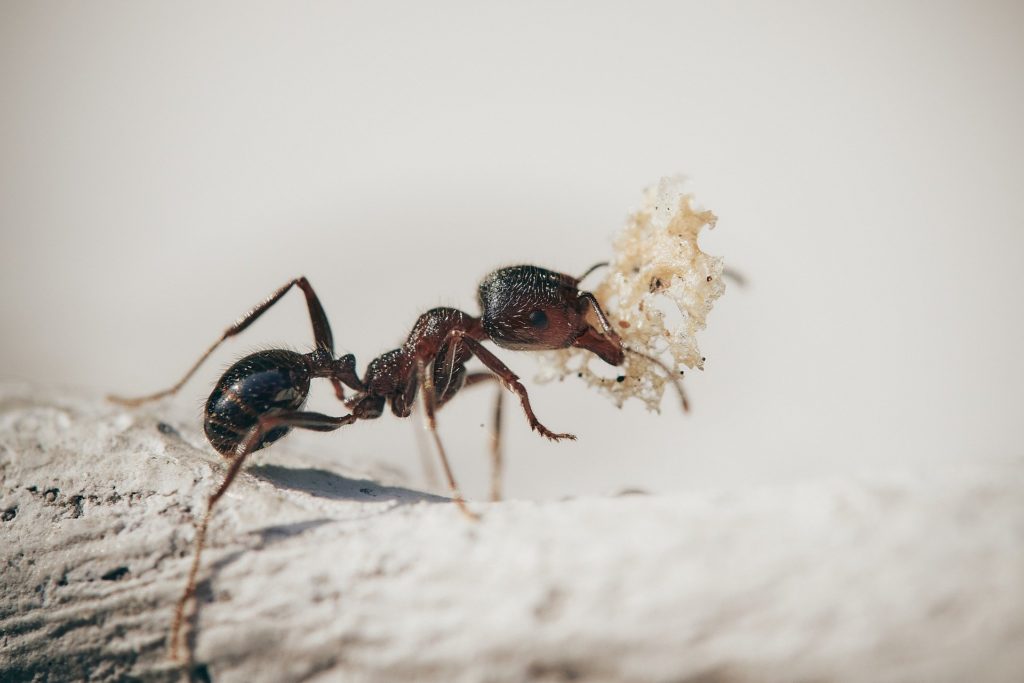Ant invasions often begin with a few ants following a trail — called an ant trail. Ant trails make it much easier to spot and remove these insects from your home. Sometimes you see a few random ants that seem to appear out of nowhere or you may see a lot of ants but do not know where they are coming from. What do you do if you see ants everywhere but no trail?
Ants everywhere but no trail — why is that?
- Ants are scouting for food and water. You can have an ant infestation and not see ant trails at all and just see random ants popping up everywhere. These random ants are probably scouts — the ones responsible for looking for resources. Once they have found the food and water they need, they release pheromones that other ants can follow to lead them to the resources. This is how ant trails are made. You don’t see ant trails simply because they are yet to form. They will once they have spotted resources to gather.
- An ant infestation is still slowly building up. Ants are industrious creatures. They work hard and fast. This is why when you see ants they always seem to be scrambling to get stuff done. However, this doesn’t mean that entire ant colonies can be made overnight. Ant infestations take time to build up. You see ants everywhere but no trail because the ant colonies are young. When they mature, the ants will become much more prominent. You will see ant trails by then.
- There is actually an ant trail, and you just can’t see it. Ants are small insects. They can be as small as 2 millimeters. This means they can get through the smallest of passageways inside your home, such as cracks and holes in walls and gaps between doors and windows. They can even nest in windows, especially if the windows are close to a tree branch. The point is, there may be ant trails inside your home and you just can’t spot them because they are in the most obscure places. They can be at the edges of your walls or on the parts of windows you can’t see.

How to get rid of ants and ant trails
- Use commercial pesticides. Ants are really not that dangerous, except when you are dealing with ant species that can bite and sting hard, like fire ants. Generally, ants are just nuisance pests. But if they are getting out of control, you can get rid of them with commercial products. Sprays are great if you want to kill ants directly on sight. But baits are better if you want to kill ants up to the source — the ant nest. Be careful in using these products. They have toxic ingredients that can be harmful to you and your family. Children and house cats and dogs, for instance, can get to the ant baits you have set up and eat them out of curiosity.
- Use natural ingredients with strong odors. Ants form ant trails as they follow ant pheromones that lead to food and water sources. One way ants detect these pheromones is through their sense of smell. You can disrupt ants and their ability to gather resources by ruining their sense of smell or masking the scent of pheromones. You can do these by using natural ingredients with strong odors. Vinegar is a great example. It’s safe and very accessible. Some people also have success with cinnamon.
- Try boiling water. The problem with natural ingredients like cinnamon and vinegar is that they only act as repellents, not pesticides. This means they can only disrupt or repel ants, not kill them. Boiling water is a great natural solution to ant infestations because it can actually kill ants. But be careful in pouring them on ants and ant trails, especially if the ants are on a part of your home that is vulnerable to moisture. If the ants are on a plywood wall, for example, you may want to try a different method.

How to prevent ant trails and ant infestations
- Deprive them of food and water sources. You have ants in your home because it has readily available food and water. If these resources are not easily accessible, pests in general, not just ants, will have a difficult time around your property. They won’t be able to thrive very well. Put food in cabinets, containers, refrigerators, or anywhere else where ants can’t easily reach them. Always clean up after eating because food crumbs and water spills are enough to attract these pests. And don’t forget to keep your home clean and dry, particularly your bathroom and kitchen. These are hotspots for ant infestations.
- Don’t give them passageways they can squeeze through. Ants have a more diverse diet than you think. They don’t just consume human food. They can also eat fungi and insects. If you don’t want your home to be part of their scouting area, make it inaccessible. Fix all structural damages such as cracks and holes. Seal all gaps with weather strips. Give priority to those that are connected to the outside world, like windows near tree branches.
- Remove the ant nest. You are not getting rid of ant infestations by killing off ants and ant trails you see around your home. The ant nest can just replenish its population and pester you again. You have to get rid of the ant nest to completely eliminate the ant infestation. You can call pest control professionals. But you can find the ant nest yourself by simply following the ants. You can bait the ants and then follow them back to their nest. And then use methods on the nest to actually kill the ants, such as commercial pesticides like sprays and natural ingredients like boiling water.
Ants everywhere but no trail…
Yes, it’s possible to see ants everywhere but no ant trail. The ants can still be scouting for food and water or the ant colony has not yet fully developed. Once the ants find resources or have grown their colony, you are sure to see ant trails around your home.
Get rid of these pests with commercial pesticides like sprays and natural ingredients like boiling water. You can also disrupt their ant trails and pheromones by spreading ingredients with strong odors like cinnamon and vinegar. But if you really want to eliminate the ants for good, go for the nest.

